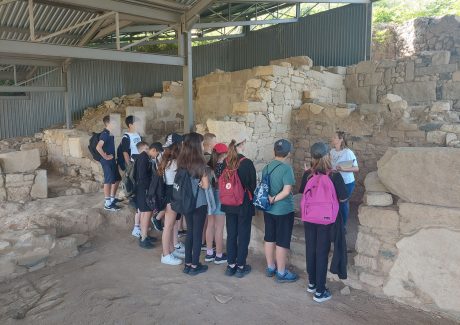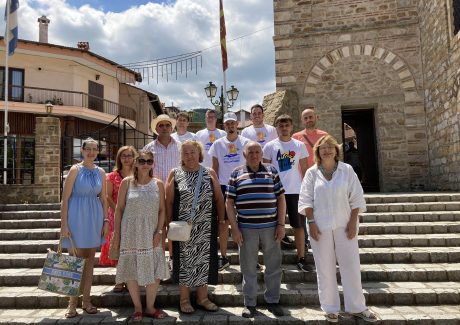Chalkidiki
Three peninsulas; countless values
Chalkidiki is an area of special ecological value. Large parts are listed in the NATURA 2000 European Network of Protected Areas, while the imposing Mount Athos preserves its areas of unspoilt nature.
Chalkidiki is the place where honey, oil and wine of the highest quality are produced; it is the rich fishing grounds with the crystal clear waters; the land that is home to a wealth of mineral resources.
Chalkidiki is the intangible cultural heritage and the various aspects of modern life: gastronomy and traditional recipes, customs and traditions of its people, festivals and artistic events, high-quality recreational services offered to its visitors.
Chalkidiki is the history that continues uninterrupted since the Paleolithic period. It is the ancient cities, its towers and castles, its temples and Byzantine monuments. It is Stagira, the birthplace of Aristotle and Mount Athos, the Holy Mountain, which emerged as a major monastic community and is included in the UNESCO World Heritage List, guarding treasures of faith and art.
Evidence of human settlement in coastal zones such as Mende and Torone • probably receiving colonists from southern Greece
Citizens of Eretria and Chalkis establish colonies in Pallene and Sithonia, the most important of which are Mende, Aphytis, Sane, Skione and Torone. The Bottiaeans, expelled by the Macedonian king Perdiccas I, establish Olynthus. 655-650: Stagira, Akanthos and Sane of Acte are founded by colonists of Andros. 600 BC: Potidaea is founded by Corinthian colonists
Many cities of Chalkidiki become members
Confederacy of the cities of Chalkidiki under the leadership of Olynthus, thanks to which the city expands and gains significant power
Peloponnesian War with the significant participation of cities of Chalkidiki: 429 BC Defeat of the Athenians at Spartolo. 424 BC Defection of cities of Chalkidiki and alliance with the Lacedaemonians. 421 BC Following the Peace of Nicias, many cities of Chalkidiki become autonomous with the obligation to pay tributes to the Athenians
Following the utter destruction of Olynthus in 348 BC, Chalkidiki is conquered and becomes part of the Macedonian kingdom
Cassandreia declares its independence
Defeat of the Macedonians and submission of Macedonia to the Romans
A form of cooperative organization was developed known as the Federation of Mantemochoria
It was preceded by looting and destruction throughout Chalkidiki
Foundation of the Greek State








